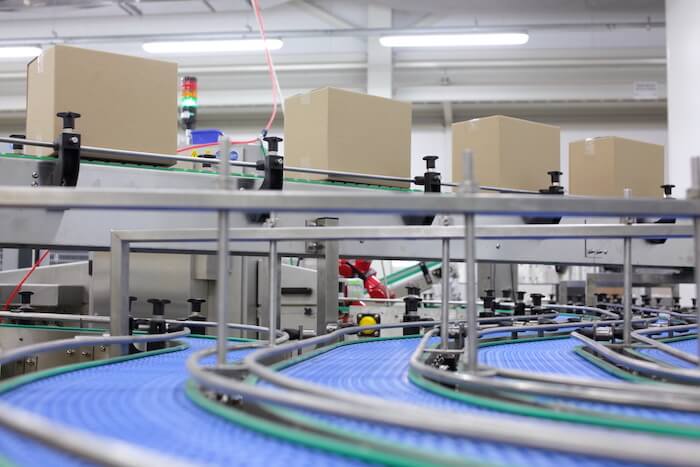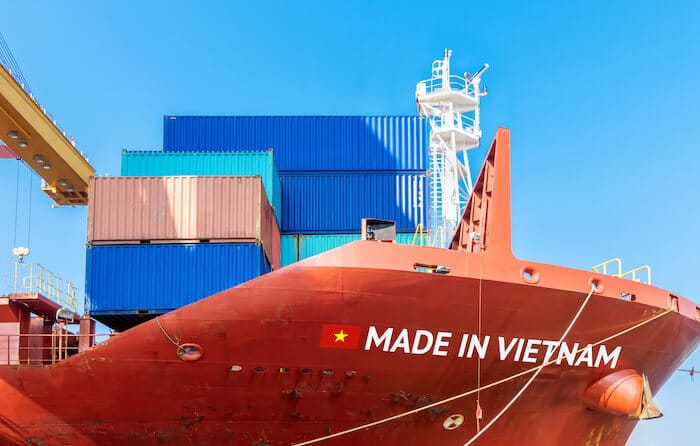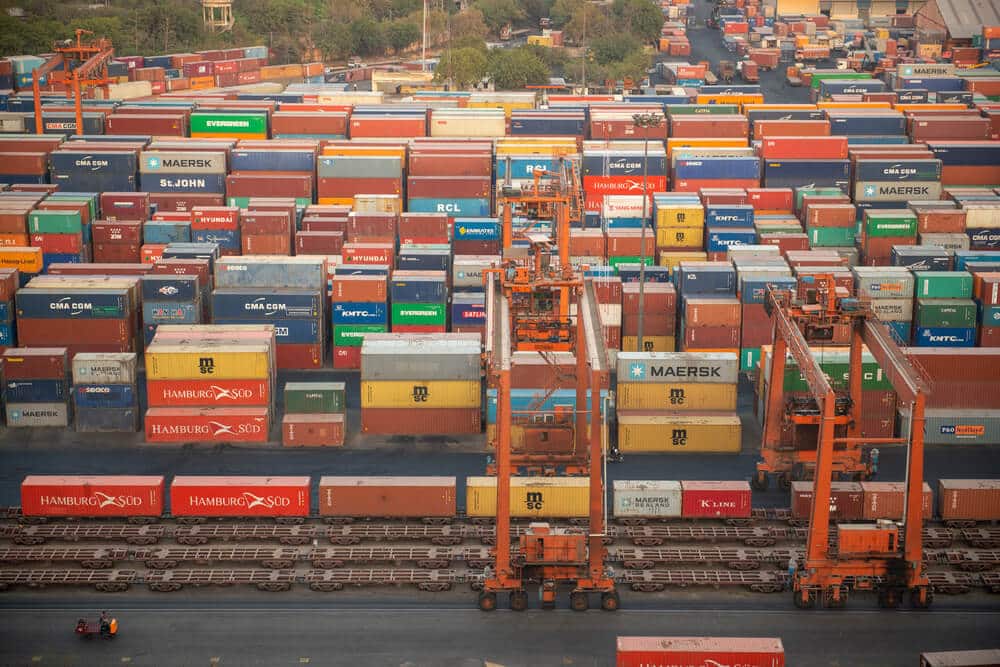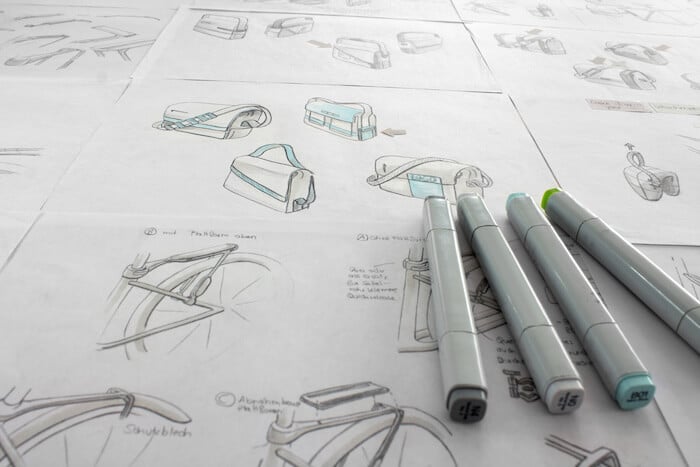The textile industry is at a pivotal juncture. Consumer demand for ethical sourcing, high-quality textiles, and rapid production is reshaping approaches to textile product manufacturing. Fast fashion has set expectations for swift product cycles and affordability, but growing concerns over sustainability and labor practices are driving brands to rethink traditional manufacturing approaches.
For small and medium-sized businesses (SMBs) creating textile products, success hinges on selecting appropriate raw materials, managing costs, and collaborating with manufacturing partners who prioritize speed, quality, and environmental responsibility. Manufacturers who adopt automation and digital textile printing offer opportunities for brands to streamline production and minimize waste.
This guide explores every stage of textile manufacturing—from design and sourcing to modern production techniques and supply chain resilience—so emerging brands can make informed decisions in a competitive market.
Key Takeaways
- SMBs can compete in the textile industry by prioritizing quality, sustainability, and ethical manufacturing. Differentiating through responsible sourcing, durable materials, and transparent supply chains helps brands appeal to conscious consumers and meet evolving market expectations.
- Selecting the right manufacturing partner is critical for long-term success. Brands should assess production capabilities, quality control processes, and ethical compliance while ensuring manufacturers offer MOQs that align with their growth strategy and cost management needs.
- Efficient supply chain management reduces risk and improves scalability. Diversifying sourcing locations, optimizing inventory control, and maintaining strong supplier relationships help brands navigate disruptions, control costs, and maintain production stability.
- Technology is reshaping textile production, but SMBs should focus on cost-effective solutions like digital textile printing to improve efficiency. Modular production methods can enhance consistency and reduce waste, but brands should prioritize working with manufacturers who have already integrated these advancements rather than investing in costly in-house solutions.
The Evolving Landscape of Textile Manufacturing
Textile manufacturing is a complex and dynamic industry encompassing a wide range of products and applications. From apparel and fashion textiles to home furnishings, technical fabrics, and industrial materials, each segment has its own production demands and challenges. As market demands evolve, SMBs must stay agile and informed about the trends shaping their specific product categories.
Across the textile industry, shifting consumer expectations are influencing how manufacturers approach production. Sustainability and durability are becoming key priorities in home textiles, with products like bedding, curtains, and upholstery increasingly featuring materials such as organic cotton and recycled polyester. In industrial applications – ranging from automotive and healthcare to construction – textiles are designed for high performance, safety, and durability. Technical textiles, used in areas like sportswear and protective gear, are engineered to deliver specific functions, including moisture-wicking, fire resistance, and chemical protection.
Among these varied segments, one of the most significant and fast-paced trends is fast fashion. This model has transformed the apparel industry by emphasizing speed, affordability, and rapid turnover of new clothing collections. While fast fashion has undoubtedly influenced how apparel is produced, it also comes with unique challenges and significant drawbacks. Let’s take a closer look at how fast fashion has reshaped textile manufacturing – and the consequences that come with it.

The Rise of Fast Fashion and Its Impact on Textile Manufacturing
What Is Fast Fashion?
Fast fashion is a business model focused on rapidly and affordably introducing new clothing trends to the market. Unlike traditional fashion cycles, which may take months to move from concept to production, fast fashion brands can design, manufacture, and distribute new collections in just weeks. This rapid turnaround allows consumers to frequently update their wardrobes at low prices.
Fast fashion’s influence has reshaped the textile manufacturing industry, leading to an unprecedented increase in clothing production. Between 2000 and 2014, global clothing production doubled, and the number of garments purchased per person increased by about 60%, according to a recent report published by McKinsey. Today, the global fashion industry is valued at $1.7 trillion, employing over 300 million people worldwide.
How Fast Fashion Is Reshaping the Industry
Fast fashion’s focus on speed and cost-cutting has reshaped textile manufacturing, leading brands to rely heavily on synthetic materials like polyester and mass-production techniques to maintain low prices. The strategy has proven successful—40% of US consumers and 26% of UK consumers shopped at fast fashion giants Shein or Temu in 2023. These companies, along with other fast fashion retailers, have consolidated their position as the leading online fashion marketplaces in the US.
However, this success comes with significant downsides. The fast fashion industry generates massive waste, with global apparel consumption projected to rise 63% by 2030, reaching 102 million tons. Many of these garments are treated as disposable—some estimates suggest consumers discard the lowest-cost items after just seven wears. For every five garments produced, the equivalent of three is either incinerated or sent to landfills, contributing to an industry that produces 1.2 billion tons of greenhouse gas emissions annually—more than all international flights and maritime shipping combined.
Opportunities for SMBs in a Changing Market
While fast fashion remains dominant in large-scale textile manufacturing, shifting consumer expectations are opening space for SMBs to compete by prioritizing quality, sustainability, and ethical production.
Growing awareness of fast fashion’s environmental and social impact has led to a shift in consumer purchasing behavior—particularly among millennials and Gen Z shoppers, who are increasingly looking for alternatives to mass-produced, disposable clothing. Many consumers now expect brands to adopt sustainable materials, ethical labor practices, and transparent supply chains, creating demand for higher-quality, responsibly made products.
For SMBs creating textiles, the ability to differentiate through responsible production is critical to long-term survival. While competing with fast fashion on price and speed is unrealistic, smaller brands can stand out by emphasizing ethical labor practices, sustainable sourcing, and durable textiles to attract conscious consumers. Establishing trust through transparent supply chains and thoughtful material selection is no longer just a marketing advantage—it’s a necessity for standing out in an increasingly scrutinized industry.
To build a brand that prioritizes quality and sustainability, SMBs must first understand the textile manufacturing process—how materials are selected, fabrics are produced, and quality is maintained throughout production.

Understanding the Textile Manufacturing Process
The textile manufacturing process involves multiple stages, each critical to determining the quality, durability, and sustainability of the final product. From selecting raw materials to final quality control checks, every step influences the durability, quality, and market performance of a textile product. For emerging brands, understanding these phases is essential for making informed decisions when sourcing and manufacturing textiles.
Key Stages of Textile Production
Raw Material Selection
The foundation of textile production begins with choosing the right raw materials, which can be either natural fibers like cotton and wool or synthetic fibers such as polyester and nylon. Natural fibers are highly breathable and biodegradable, making them a preferred choice for sustainable textile manufacturing. However, their environmental impact varies—cotton requires significant water and pesticide use, while hemp is more resource-efficient but requires specialized processing.
Synthetic fibers, on the other hand, are more affordable and durable but are derived from petroleum-based sources, making them less environmentally friendly. The choice of raw materials impacts not only the quality and performance of the final textile product but also its environmental footprint and market appeal.
Yarn Production & Weaving
Once fibers are selected, many undergo spinning, where they are twisted together to produce yarn. This process can be done using traditional spinning methods or modern automated techniques that enhance consistency and strength. However, some fibers—such as those used in non-woven fabrics like felt or certain medical textiles—skip the spinning stage and are bonded directly into textiles.
After preparation, the material is woven or knitted into fabric, depending on the intended application. Weaving processes interlace threads in structured patterns, creating strong and durable textiles, while knitting methods result in more flexible, stretchable fabrics. The fabric construction method plays a critical role in determining the texture, weight, and durability of finished textiles.
Pre-Treatment & Dyeing
Before textiles can be dyed or printed, they undergo a pre-treatment phase that removes natural impurities, oils, and residues. This step ensures that dyes and finishes adhere properly, improving color consistency and fabric longevity.
Traditional dyeing processes rely on large quantities of water and chemicals, raising environmental concerns. As an alternative, digital textile printing has emerged as a low-waste solution, allowing for precise, customized designs without excess dye runoff. Choosing the right dyeing process is crucial for ensuring vibrant colors and long-lasting textile performance.
Cutting & Sewing
Once the fabric has been treated and dyed, it moves into cutting and sewing, where textile pieces are shaped and assembled into garments or finished textile products. This stage directly affects production efficiency and material waste—optimized pattern cutting can significantly reduce fabric loss.
Depending on the manufacturer, cutting may be done manually or with laser cutting machines, which offer greater precision and less material waste. Sewing, while still largely reliant on skilled labor, is increasingly supplemented by automated sewing machines for mass production.
Finishing & Quality Control
The final phase of textile manufacturing involves finishing treatments that enhance fabric performance and durability. This can include softening agents, waterproof coatings, anti-wrinkle finishes, or flame resistance treatments depending on the end-use of the textile.
Quality control is critical at this stage, as it ensures that color consistency, stitching integrity, and fabric durability meet both brand and industry standards. Manufacturers conduct final inspections before textiles are distributed for retail or production use, helping brands maintain high-quality textiles that meet consumer expectations.

How Automation is Changing Textile Manufacturing
Advancements in automation and artificial intelligence (AI) are transforming textile manufacturing, enhancing efficiency, and reducing production costs, particularly for large-scale operations. Leading textile manufacturers are increasingly adopting these technologies, which offer several key benefits:
- AI-Powered Defect Detection: Automated inspection systems use AI to identify inconsistencies in weaving and dyeing, improving overall quality control.
- Digital Textile Printing for Efficiency: Some manufacturers use digital printing to minimize water waste and shorten production cycles, making custom textiles more feasible for small-batch orders.
- Automated Cutting & Sewing: While human craftsmanship remains vital, some manufacturers integrate robotic sewing machines and laser cutting for greater precision and speed.
For SMBs, accessing these advancements depends on partnering with manufacturers that have integrated automation into their production lines. However, traditional manufacturers can still deliver high-quality textiles, so brands should evaluate partners based on their production capabilities, quality standards, and sustainability goals, rather than just their level of automation.
Choosing and Vetting the Right Textile Manufacturer
Selecting the right textile manufacturer is extremely important for businesses. A manufacturer’s production capabilities, quality control processes, and sustainability practices directly affect product consistency, cost efficiency, and scalability.
When evaluating potential manufacturing partners, brands should assess their ability to handle both small-batch and large-scale production while maintaining quality. Some manufacturers specialize in high-volume orders, while others offer lower MOQs that provide flexibility for smaller brands. Balancing production capacity with budget constraints is essential; lower MOQs let SMBs test designs without excessive inventory costs, while higher MOQs often reduce per-unit expenses.
Compliance with ethical and sustainability standards is another key factor. Consumers and retailers increasingly expect supply chain transparency and responsible sourcing. Manufacturers with certifications such as GOTS, OEKO-TEX, or Fair Trade Certified demonstrate a commitment to environmental and social standards. Quality control is equally important—reliable manufacturers implement strict inspection protocols to ensure fabric consistency, stitching durability, and product reliability at every stage of production.
Beyond technical capabilities, a manufacturer should act as a strategic partner, providing clear timelines, responsive customer service, and flexibility to adapt to evolving production needs. Establishing a relationship built on transparency and mutual understanding helps brands navigate production challenges while maintaining quality and efficiency.

Vetting a Manufacturing Partner
Once you’ve identified potential partners, conduct due diligence to verify their capabilities and ethical standards:
- Factory Audits & Supplier Evaluations: Visiting a facility (or working with third-party auditors) helps assess production quality, working conditions, and compliance with industry regulations.
- Certifications & Compliance Checks: Verifying sustainability and safety certifications ensure manufacturers meet ethical and environmental standards.
- Testing Sample Orders: A sample production run helps assess fabric quality, stitching consistency, and overall durability before committing to bulk production.
- Leveraging Vetted Supplier Networks: Using trusted industry sourcing platforms can help reduce risk and streamline the selection process
By taking a strategic, research-driven approach to selecting a manufacturing partner, SMBs can ensure product quality, scalability, and responsible production practices.
Evaluating Sourcing Regions for Textile Manufacturing
Choosing where to manufacture textiles depends on a variety of factors, including cost, quality, material availability, trade regulations, and supply chain reliability. Each region offers distinct advantages and challenges, making it essential for brands to align their sourcing strategy with their production goals and market needs.
China
China remains one of the largest players in global textile production, offering high-volume manufacturing, extensive supplier networks, and a well-established infrastructure. The country’s textile manufacturing industry is highly diversified, producing everything from low-cost synthetic fibers to premium natural fabrics. However, rising labor costs and ongoing trade tensions, including tariffs and export regulations, have led some brands to explore alternative sourcing options.
Vietnam & Bangladesh
Vietnam and Bangladesh have emerged as cost-competitive alternatives for mass production, particularly for garments and apparel. These regions are known for their low labor costs, strong textile manufacturing capabilities, and increasing investment in sustainable practices.
Bangladesh is one of the world’s largest producers of ready-made garments, while Vietnam benefits from favorable trade agreements with the U.S. and EU. However, both countries may have longer lead times due to high demand, and brands must carefully vet manufacturers to ensure compliance with ethical labor and environmental standards.

India
India has a long-established textile industry, specializing in organic cotton, plant-based dyes, and traditional weaving techniques. The country is a strong choice for brands focused on sustainability, offering a wide range of natural fibers and eco-friendly production methods. While labor costs are lower than in China, infrastructure challenges and supply chain inefficiencies can sometimes lead to longer production timelines.
Turkey
Turkey is a strategic choice for brands looking for high-quality textile manufacturing with faster shipping times to European markets. The country has a well-developed textile sector, particularly in premium fabrics, denim, and technical textiles. Turkey also enforces strong environmental regulations, making it an attractive option for brands prioritizing sustainability. However, costs can be higher than in South and Southeast Asia, and businesses should monitor geopolitical factors that could impact trade stability.
Mexico & Latin America
Mexico and other Latin American countries offer closer proximity, lower shipping costs, and shorter production lead times, making them an attractive option for brands looking to streamline logistics. Mexico, in particular, benefits from USMCA trade agreements and a growing emphasis on sustainable textile production. However, material options may be more limited compared to Asia, and capacity constraints could make it challenging for brands requiring high-volume production.
Key Considerations for SMBs Creating Textile Products
For businesses developing textile-based products, success hinges on forming strategic partnerships with reliable manufacturers and effectively managing sourcing and supply chain logistics. Competing with large-scale textile manufacturers solely on cost and speed is often unrealistic, but SMBs can thrive by focusing on quality, sustainability, and operational efficiency. By making informed decisions about materials, production methods, and supplier partnerships, brands can build a resilient, adaptable manufacturing process that supports long-term growth.
The following key areas are critical for SMBs looking to succeed in textile production while managing costs, mitigating supply chain risks, and meeting consumer expectations for high-quality textiles.
1. Diversify Sourcing to Reduce Risk
Sourcing textiles from a single country or supplier increases exposure to geopolitical risks, trade restrictions, and supply chain disruptions. To maintain stability and cost efficiency, SMBs should evaluate a mix of global and regional manufacturers. Countries like Vietnam, India, and Bangladesh offer cost-effective textile production while nearshoring to Mexico or Latin America provides faster delivery times and reduced logistics costs for many businesses.

Beyond location, brands should also consider material sourcing diversification. Depending on a single fabric supplier can create bottlenecks, especially during periods of high demand or shortages of raw materials. By partnering with multiple manufacturers and textile suppliers, SMBs can ensure production flexibility, control lead times, and negotiate better pricing. A diversified sourcing strategy also enables better alignment with sustainability goals, allowing brands to integrate eco-friendly textiles and ethical manufacturing practices without compromising on availability or cost.
2. Balance Cost Efficiency with Quality Control
Keeping production costs manageable is essential for SMBs, but prioritizing the lowest price over quality control can result in inconsistent products, high defect rates, and costly production setbacks. Instead of focusing solely on low production costs, brands should evaluate manufacturers based on their ability to meet quality standards, enforce strict quality control (QC) measures, and scale production responsibly.
One way to optimize costs while maintaining high-quality textiles is by negotiating MOQs. Low MOQs offer greater flexibility, allowing brands to test new designs and minimize overproduction, but they often come at a higher per-unit price. Larger MOQs typically provide better pricing but require a greater upfront investment in inventory. SMBs should assess their sales volume, storage capacity, and demand forecasting before committing to large orders. Testing sample production runs before full-scale manufacturing is also critical for ensuring product durability, fabric consistency, and compliance with brand expectations.
3. Improve Logistics & Inventory Management
Managing inventory efficiently is critical for SMBs in textile manufacturing. Poor inventory planning can lead to excess stock, production delays, and cash flow issues, while supply chain disruptions may cause material shortages and missed deadlines. Implementing flexible logistics strategies helps businesses balance cost control, production efficiency, and supply reliability.
To improve inventory management and mitigate risks, SMBs should:
- Adopt Just-in-Time (JIT) inventory management: Producing textiles only as needed reduces overstocking and minimizes warehousing costs. However, this approach requires a reliable supply chain and strong manufacturer coordination.
- Monitor supplier lead times and production schedules: Maintaining accurate production timelines prevents delays in delivery and material shortages. Businesses should work with manufacturers that provide transparent updates on order fulfillment and shipping timelines.
- Improve warehouse and inventory tracking: Implementing barcoding, digital inventory systems, or third-party logistics (3PL) partnerships can help track materials and finished textiles more accurately, ensuring brands can meet customer demand without overproducing.
4. Prioritize Sustainability to Meet Market Expectations
Sustainability is becoming a key differentiator for brands in the textile manufacturing industry. Consumers and retailers are demanding transparency in textile supply chains, pushing companies to adopt eco-friendly materials and responsible manufacturing practices. SMBs that prioritize sustainability not only appeal to conscious consumers but also prepare for future regulations on waste reduction and carbon emissions.

To align with sustainability goals, brands should work with certified ethical manufacturers that meet recognized environmental and labor standards. Certifications such as GOTS (Global Organic Textile Standard), OEKO-TEX, and Fair Trade Certified ensure that textiles are produced without harmful chemicals, sourced from responsible suppliers, and manufactured under fair working conditions. Additionally, incorporating recycled fibers and water-efficient dyeing processes can help brands reduce environmental impact without sacrificing quality or performance.
Beyond product development, SMBs should also monitor sustainability efforts across their supply chain. This includes evaluating factory working conditions, waste management practices, and energy efficiency to ensure compliance with ethical and environmental standards. By integrating sustainability into their core business strategy, SMBs can stay competitive while building a stronger, future-ready textile brand.
How SMBs Can Succeed in Textile Manufacturing
The textile production process is complex, but SMBs can find success by prioritizing flexibility, quality, and sustainability. Diversifying sourcing, improving supplier relationships, optimizing inventory management, and aligning with responsible manufacturing practices will help brands navigate industry challenges while scaling effectively.
For emerging brands, textile manufacturing is not just about cost efficiency—it’s about building a resilient, future-proof business that can adapt to market shifts, regulatory changes, and evolving consumer expectations. With a strategic, research-driven approach, textile production can become a sustainable and profitable growth avenue rather than an operational challenge.
Frequently Asked Questions
What are the biggest challenges for SMBs in textile manufacturing?
SMBs often struggle with meeting MOQ requirements, managing production costs, and securing reliable suppliers. Scaling operations while maintaining supply chain transparency and sustainability compliance adds further complexity. Balancing affordability with quality is key, especially when working with manufacturers that prioritize high-volume orders.
How can SMBs choose the right textile manufacturer?
SMBs should assess manufacturers based on MOQ flexibility, material expertise, compliance with sustainability standards, and production capacity. Conducting factory audits, requesting samples, and reviewing past client work ensures a reliable partnership. Clear communication and long-term scalability should also be considered.
How can SMBs reduce costs while maintaining quality?
Reducing costs without compromising quality involves negotiating lower MOQs, using pre-made fabric stock, and streamlining production processes. Choosing efficient manufacturers and implementing waste-reduction strategies like batch production or on-demand manufacturing helps minimize expenses. Evaluating supply chain logistics also prevents unnecessary costs.
What are the most sustainable fabric options for small brands?
SMBs can prioritize organic cotton, hemp, bamboo, and recycled polyester to reduce environmental impact. Low-impact dyeing and closed-loop production systems further enhance sustainability. Partnering with certified manufacturers (GOTS, OEKO-TEX, or Fair Trade Certified) ensures responsible sourcing.
How can SMBs future-proof their textile supply chain?
To build resilience, SMBs should diversify sourcing locations, establish relationships with multiple suppliers, and consider nearshoring. This reduces reliance on a single supplier and mitigates risks from trade disruptions or material shortages. Investing in inventory tracking and supply chain transparency improves adaptability and efficiency.



